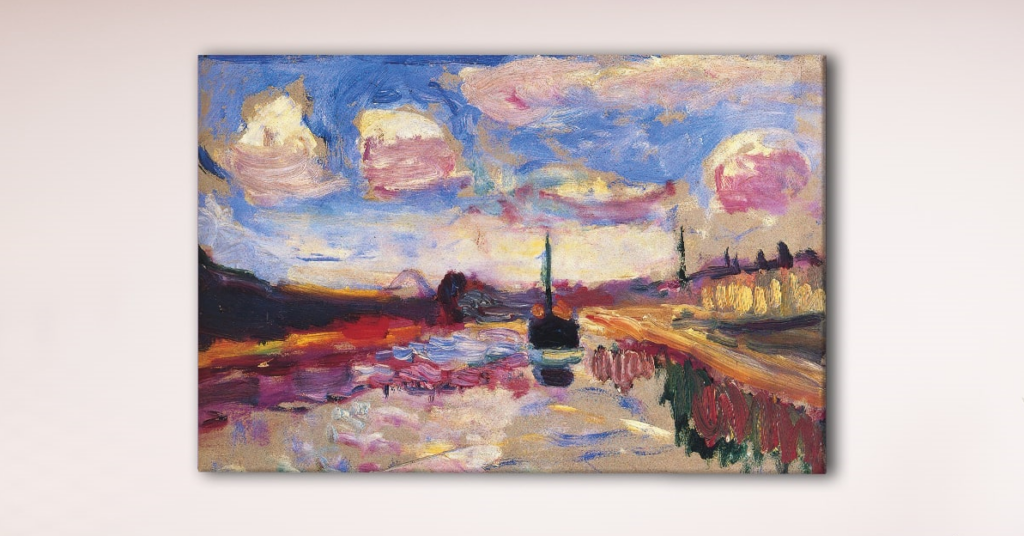Henri Matisse’s “Canal du Midi” is a painting that captures the beauty and tranquility of the French countryside. Created in 1898, the work depicts a peaceful scene along the Canal du Midi, a historic waterway that connects the Atlantic Ocean to the Mediterranean Sea. In this article, we will explore the history, meaning, and significance of this iconic work of art.
The History of The Work
Henri Matisse painted “Canal du Midi” during his time in Collioure, a small fishing village in southern France. This was a significant period in his artistic development, as he began experimenting with bright colors and bold, simplified forms. The painting is part of a series of works that Matisse created during his stay in Collioure, which have come to be known as his “fauvist” period.
“Canal du Midi” was painted in oil on canvas, using a thick impasto technique that created a textured, almost sculptural effect. The painting depicts a small boat moored along the canal, with a small cluster of trees and a hill in the background. The water is rendered in a series of horizontal brushstrokes, creating the illusion of shimmering ripples and reflections.

>Shop Canal du Midi Print Reproduction
The Meaning Behind The Artwork
“Canal du Midi” is a reflection of Matisse’s love of nature and his desire to capture the beauty and tranquility of the French countryside. The painting is notable for its use of bright, almost psychedelic colors, which are intended to convey a sense of joy and vitality. The bold, simplified forms and thick, textured brushstrokes suggest a sense of immediacy and spontaneity, as if the painting were created in a single burst of inspiration.
“Canal du Midi” Significance
“Canal du Midi” is significant for its role in the development of fauvism, a movement in early 20th-century art that emphasized the use of bold, bright colors and simplified forms. The painting is a prime example of Matisse’s fauvist style, which would go on to influence generations of artists in the decades to come.
In addition to its artistic significance, “Canal du Midi” is also notable for its historical and cultural significance. The Canal du Midi itself is a UNESCO World Heritage Site, renowned for its beauty and importance in the history of transportation and engineering. Matisse’s painting captures a moment in time when the canal was still an important lifeline for commerce and trade in the region, and offers a glimpse into a world that has since been lost to the sands of time.
Henri Matisse’s “Canal du Midi” is a masterpiece of fauvist art that captures the beauty and tranquility of the French countryside. Its bold, bright colors and simplified forms reflect Matisse’s love of nature and his desire to capture the joy and vitality of life. The painting is a testament to the power of art to convey a sense of wonder and awe, and to connect us to the world around us in new and meaningful ways. Whether viewed as a work of art, a historical document, or a cultural artifact, “Canal du Midi” is a painting that continues to captivate and inspire people of all ages and backgrounds.
You can shop “Canal du Midi” print reproduction from our shop. Check out all of our fine art prints to display in your home.











